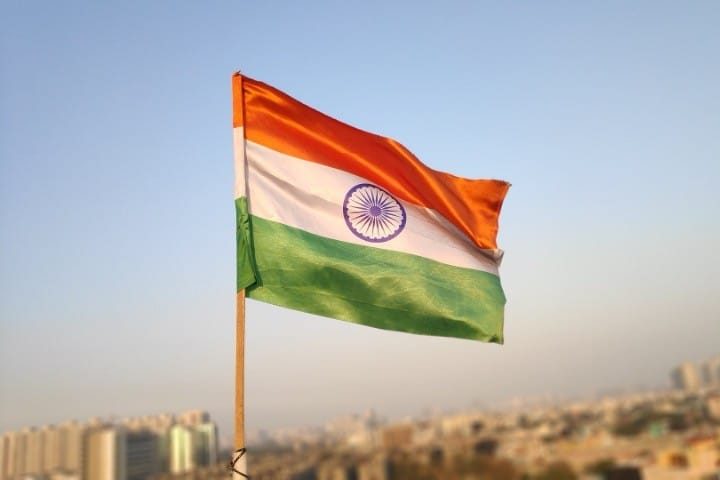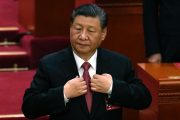
SINGAPORE — In February 2022, when the 15-nation United Nations (UN) Security Council hurriedly tried to canvass for votes to denounce Russia’s role in the Ukraine crisis, India, together with China and Qatar, abstained from condemning Russia.
Diplomatically, such an abstention was not easy for India. Much as New Delhi did not want to rattle the United States, one of its largest trading partners, it also did not wish to isolate Russia, its historically significant ally that provides around 46 percent of its military equipment.
For years, India has relied on Russia’s diplomatic backing at the UN for its claims over the disputed territory of Kashmir. By abstaining from a denunciation of Russia, India arguably placed its own strategic interest at the forefront while navigating through an increasingly multipolar world. Prior to events at the UN Security Council on counterterrorism and multilateralism hosted by India on December 14 and 15 last year, even Russian Foreign Minister Sergey Lavrov described India as one of the most vital poles of the emerging multipolar word order.
“India is one of the leading countries in terms of economic growth, maybe even the leader,” Lavrov said, adding that India has vast diplomatic experience in settling various kinds of problems.
“India is part of a range of integration structures in South Asia within SCO [the Shanghai Cooperation Organization] & it takes an active role in the United Nations. India is a country that not only aspires to be but is at the essence of the forming of a multipolar world as one of its most important poles,” he added.
What this implies is that India has been — and must continue — walking a diplomatic tightrope by being an ally of Russia and cooperating with Western alliances, such as the Quadrilateral Security Dialogue (Quad) alongside the United States, Australia, and Japan.
Historically, India maintained a Cold War policy of equidistance and non-alignment between the free world as embodied by the United States and the communist Soviet Union. With its rise as a major power in the 21st century, India’s foreign policy approach has morphed into a new post-Cold War framework of multi-faceted engagement with all states in the multipolar world order. Such an approach enables India to benefit its economy, facilitate its security, and make room for it to flex its diplomatic muscle more on the global arena. Therefore, it has ramped up efforts to boost key ties with all major powers, including China, its neighboring economic and security rival.
Yet India’s balancing act has been tried and tested over and over again, particularly in 2022 when the country was faced with Chinese territorial incursions as well as rising tensions between major powers like the U.S., Russia, and China.
While the U.S. and European powers pushed India to take sides in the Russia-Ukraine conflict and back the U.S.-led sanctions on Russia, India refused to openly support the UN resolutions slamming Russia’s actions in Ukraine. However, despite not openly rebuking Russia, India still called for a cessation of violence.
As Russia has openly voiced its concerns about the U.S.-led Quad, of which India is a member, India has had to assure Russia that its Quad membership has been mostly to tackle China’s rising pugilism in the Indo-Pacific region. After all, India has a vested interest to ensure that Russia does not fall into the Chinese camp when it comes to India-China disputes. Analysts have contended that India would rely on all means available to balance China’s clout, including not pushing Russia away from itself and further into the Chinese orbit.
At last year’s Eastern Economic Forum (EEF), Rishabh Sethi, founder and president of the Indian Center for Promotion of International Initiatives, a global think tank, told Sputnik News that India and Russia are depending on rupees and rubles in contracts to reduce the economic clout of the U.S. dollar, thus giving a great example of a trade partnership. Both nations also celebrated 75 years of diplomatic relations in that year.
As India assumed the presidency of the G20 summit in December last year, Indian Prime Minister Narendra Modi also remarked about India’s “big opportunity” to “focus on global good.” By drawing connections between India’s plans for setting up a multipolar world and its rise as the leader of the Global South, Modi indicated that development would be the overall theme of India’s G20 presidency, thus making the G20 “a catalyst for global change” and a champion of the interests of developing nations.
Talk has already been rife about how India could use its G20 presidency to coordinate with its like-minded and long-term partners such as Japan and Australia, as well as to engage more with the Association of Southeast Asian Nations (ASEAN). Engaging with various allies would gel with India’s regional foreign policy goals in a multilateral and multipolar world.
With New Delhi and ASEAN boosting relations to a Comprehensive Strategic Partnership in November 2022, calls are underway for India to work with these Southeast Asian nations in the economic sphere, particularly via its G20 leadership.
Leveraging on its experience in championing the developing world’s interests as well as its caution in navigating its ties with developed countries, India has increased its global power status and bargaining power to voice its concerns about “the non-democratic and unequal nature of global governance institutions.” For instance, India has asserted that multilateral financial institutions have failed to capitalize on the “endowments they have, optimally, nor do they have a plan through which to better address the concerns of further funding countries and their developmental goals.”
With the slowing down of the Chinese economy, a faltering property market, industrial overcapacity, and rising unemployment due to Chinese President Xi Jinping’s previous zero-Covid policy and series of stringent lockdowns, investor and consumer confidence in China has eroded considerably.
Nonetheless, India’s economic situation seems to offer a glimmer of hope to the country and to the rest of the world amid rising global inflation and costs of living. With the Indian government incentivizing large-scale manufacturing capacities via production-linked incentive (PLI) schemes and the “Make in India” initiative, the country has become an exporter of mobile phones and has been ramping up efforts in manufacturing. Thus, India can boost its domestic capacity, decrease its reliance on external global economic factors , and offer foreign trade partners an alternative as the latter scramble to recalibrate supply chains to reduce their reliance on China.
While India will encounter obstacles to its growth from geopolitical uncertainties, inflation, and global supply-chain disruptions, it enjoys a better relationship with the U.S. and has more optimistic economic prospects than China. Thus, apart from being a useful diplomatic and political buffer to major world powers, the largest democratically governed country in the world could be a magnet for businesses looking for more resilient and cost-effective alternatives to China.



